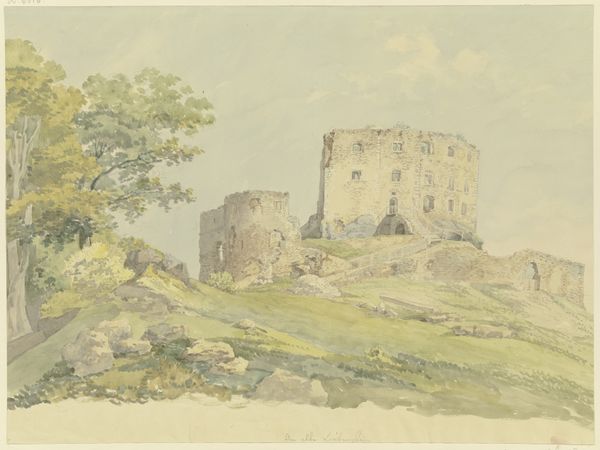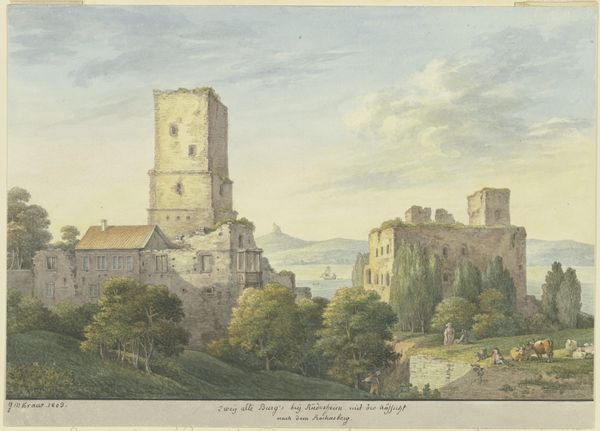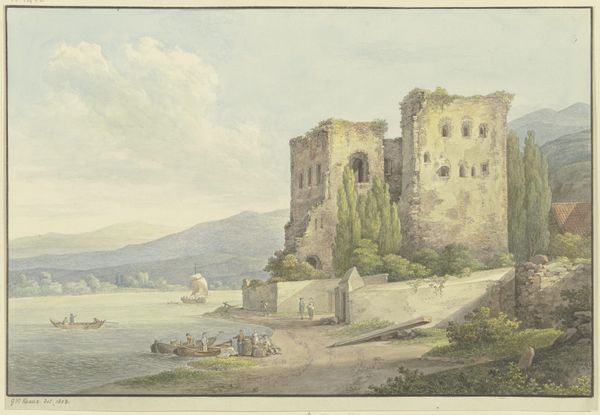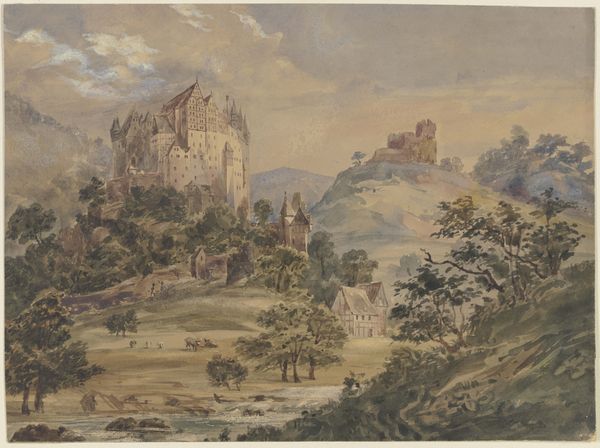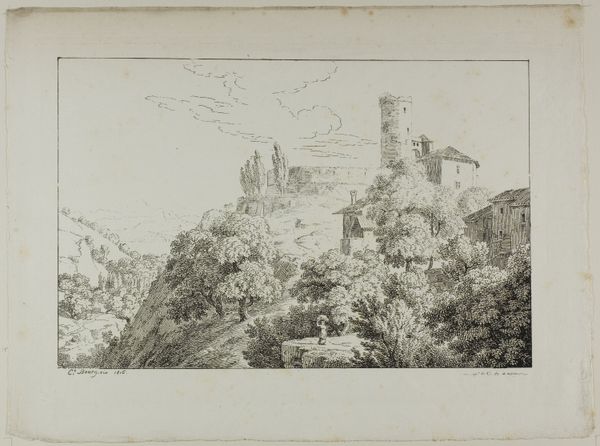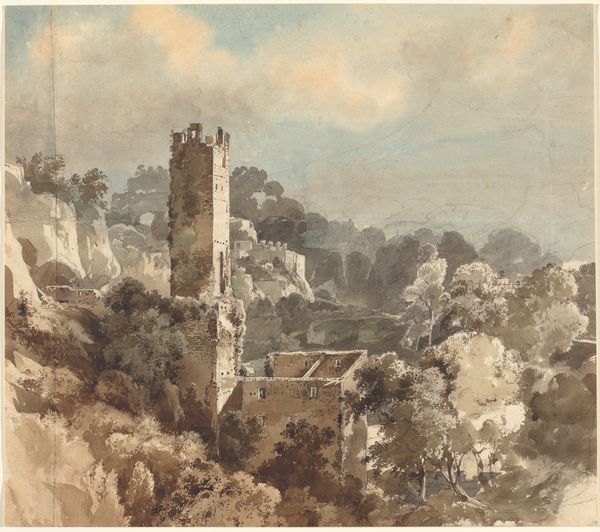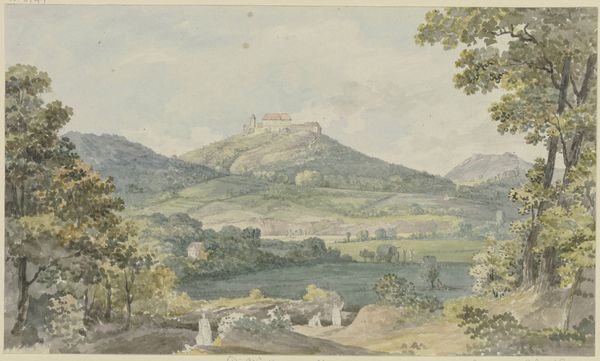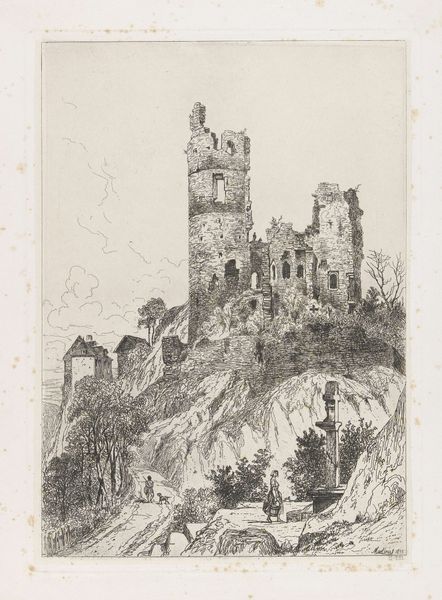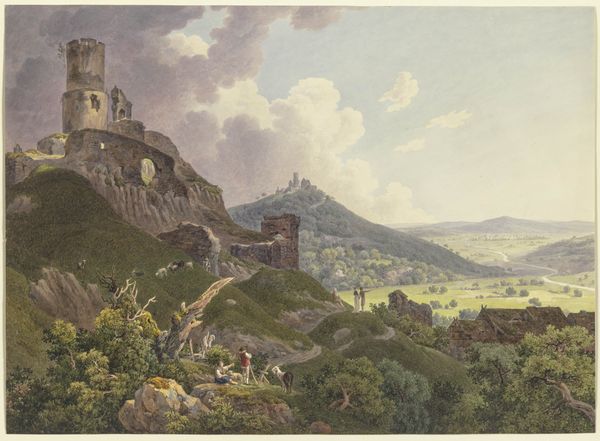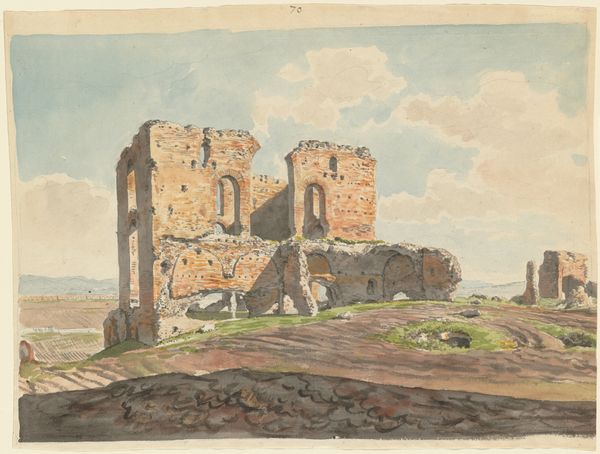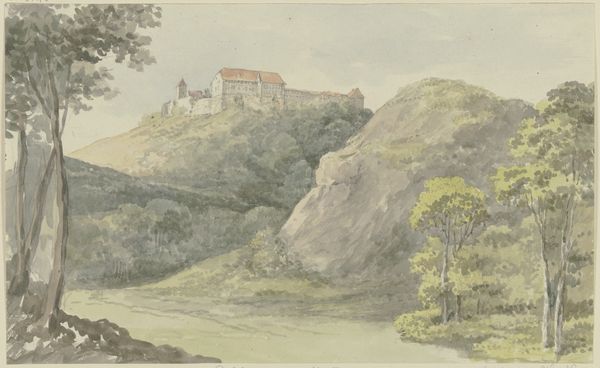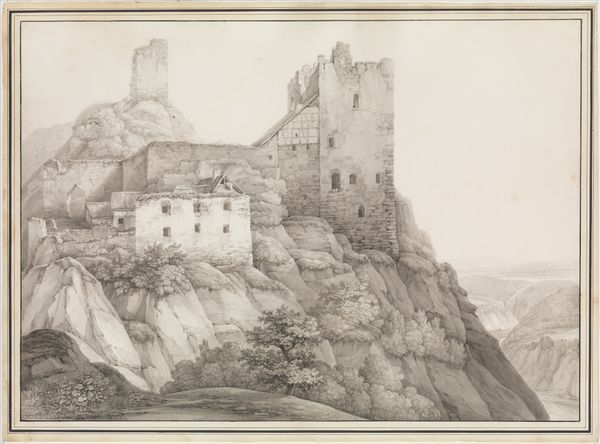
drawing, coloured-pencil, painting, plein-air, paper, watercolor, ink, architecture
#
drawing
#
coloured-pencil
#
painting
#
plein-air
#
landscape
#
paper
#
watercolor
#
ink
#
coloured pencil
#
romanticism
#
cityscape
#
history-painting
#
architecture
Copyright: Public Domain
Curator: Georg Melchior Kraus captured this image of Heidelberg Castle between 1790 and 1794, and it is currently housed here at the Städel Museum. The artwork employs colored pencil, ink and watercolor on paper, very nicely showcasing architecture in a plein-air style. Editor: My initial response is one of serene decay. The composition really draws my eye to the crumbling stone and lush overgrowth. I appreciate how the architecture presents vertical, reaching forms, contrasting with the verdant horizontal surge. Curator: I'm glad you picked up on the 'decay' aspect. Romanticism loved to focus on ruins and their symbolism - time, the collapse of systems. You'll notice Kraus chose materials suited to plein-air work allowing for quick study, almost a recording, of this particular view. Paper was fairly cheap, ink and pencil easily transportable. Editor: The tension between control and looseness fascinates me, reflecting a similar pull I see between civilization and nature. Take how those defined architectural forms meet the natural curves of foliage in the lower register, as they visually creep up the facade of the castle walls, illustrating what can only be described as natural progression. It speaks to temporality in that way. Curator: And Kraus was deeply embedded in the social and political currents of his time. He wasn’t just painting a pretty picture of a ruin. The production context matters. Heidelberg Castle had been ravaged during the Palatine War of Succession over a century before, and it became a potent symbol of German national identity. He likely sold multiple reproductions. Editor: Precisely! And note how Kraus frames the composition: not through overtly dramatic skies or harsh lighting, but through a more subdued, almost documentary lens, allowing the architecture, composition, and the textures created by his distinct employment of his selected media, to narrate. Curator: This work illustrates an interesting connection between craft and fine art. The means of production had to align with popular demand, artistic vision, and economic factors to truly resonate during this particular moment in history. I am struck by his skill. Editor: Absolutely. For me, the enduring power lies in that skillful and visually poignant convergence of form and material—the way the physical artwork embodies both the weight of history and the ethereal touch of light and color.
Comments
No comments
Be the first to comment and join the conversation on the ultimate creative platform.
